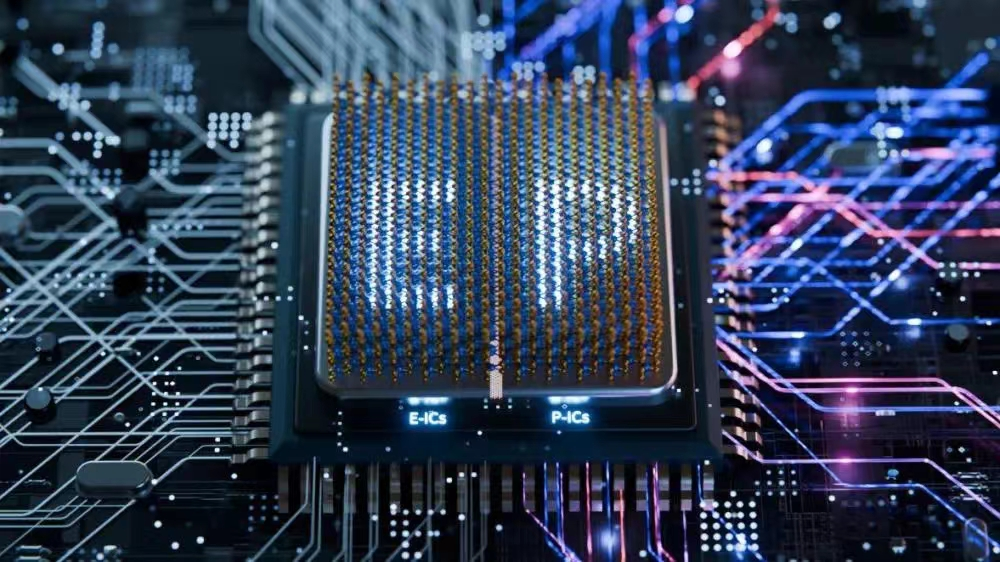Graphic: Integrated circuits based on two-dimensional crystals (Courtesy of Liu Kaihui's team)
BEIJING, July 6 (Xinhua) -- A research team led by Prof. Liu Kaihui from Peking University's School of Physics has created a novel method to produce crystals to greatly improve the controllability of their structures, according to a research article published in Science on Friday.
Crystals are indispensable key materials in modern computers, communications, aviation and laser technology. The new method of crystal production is expected to enhance the computing power of chips and serve a new generation of electronic integrated circuits and photonic integrated circuits.
The traditional method of producing large-size crystals is usually to layer atoms "bottom-up" on the surface of small crystal particles. This method is limited by the necessity for strict screening of the type and arrangement of atoms to successfully accumulate and form crystals.
"When the number of atoms increases, the atomic arrangement gradually becomes uncontrolled, and impurities and defects are gradually accumulated, affecting both purity and quality of the crystal", said Prof. Liu Kaihui.
They developed a new method to accurately control the atomic arrangement, enabling the crystal growth rate to speed up to 50 layers per minute, with the number of layers reaching up to 15,000.
The atomic arrangement of each layer is completely parallel and precisely controllable, which effectively avoids the accumulation of defects in crystal growth and improves the controllability of the structure.
The researchers have applied this new method to produce seven types of two-dimensional crystals.
"The monolayer thickness of the two-dimensional crystals is only 0.7 nanometers," said Liu. "When they are used in the transistors of integrated circuits, the integration of the chips can be significantly improved."
"And the density of transistors can be greatly increased on a fingernail-sized chip to provide more computing power," said Liu.
Such crystals can also be used for infrared frequency conversion of light, which is expected to promote the application of ultra-thin optical chips.
Source:
Xinhua News Agency
